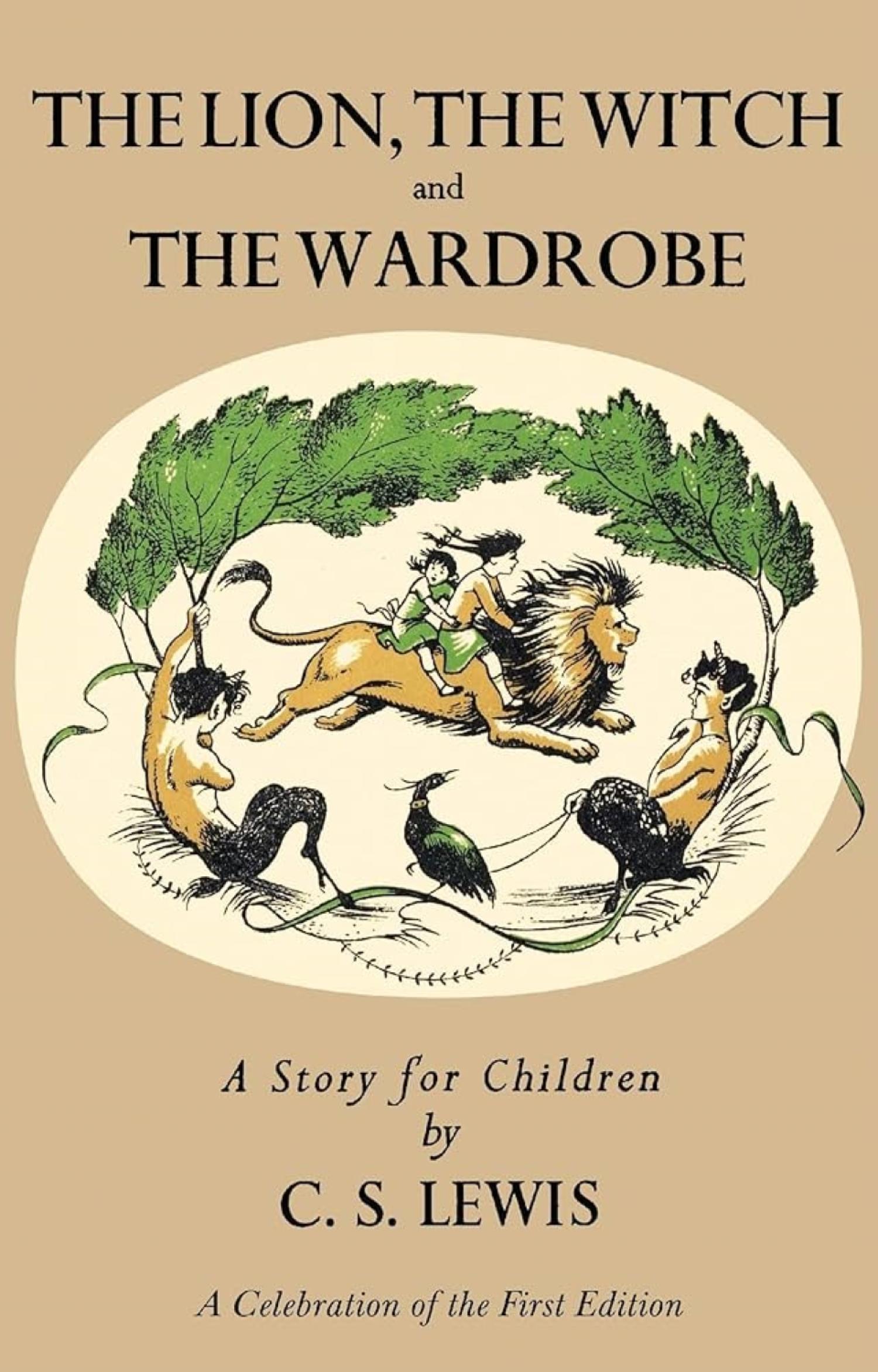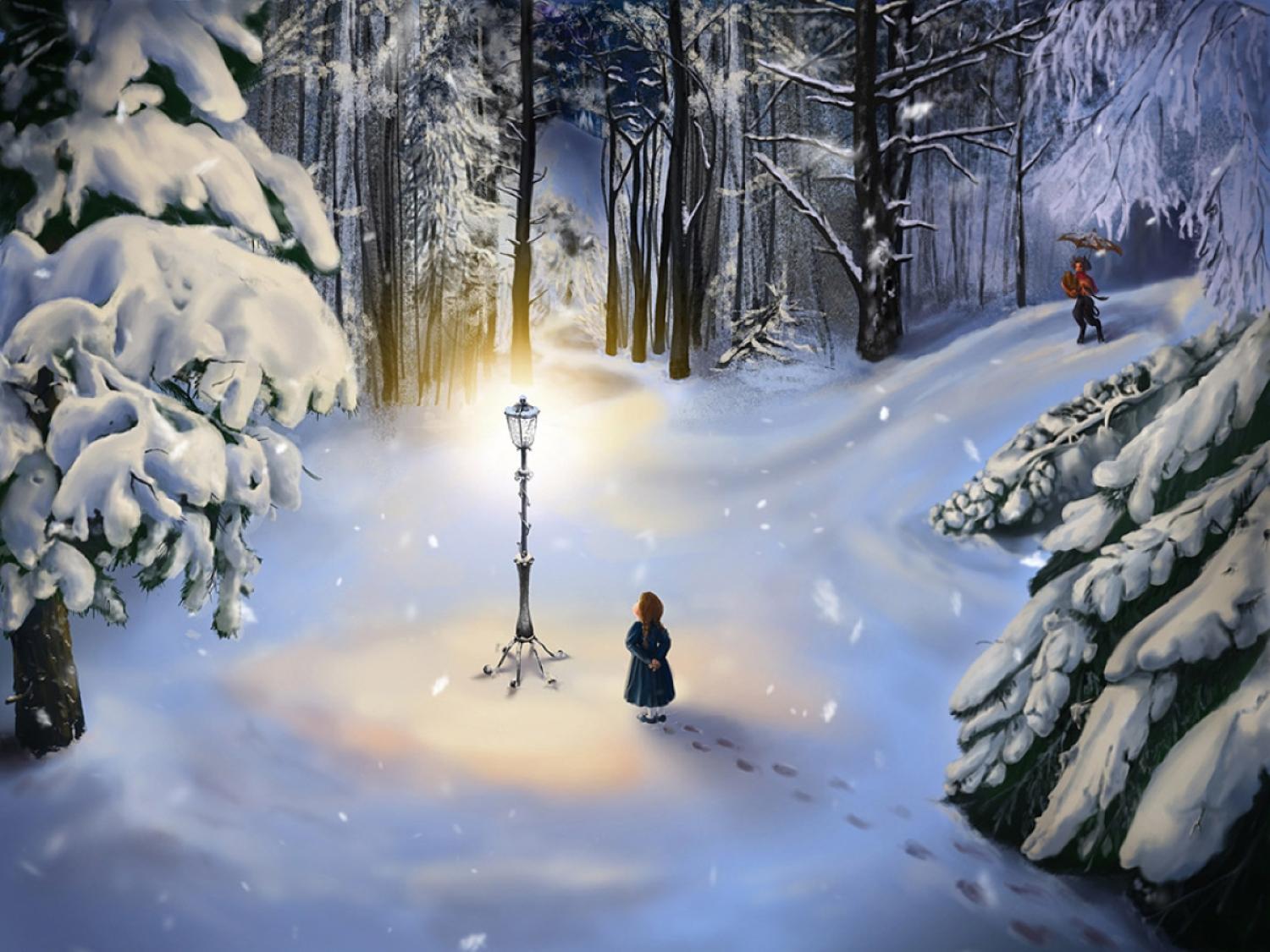Readers still traveling through the wardrobe to Narnia
Top illustration: Aslan the lion in a scene from The Lion, the Witch and the Wardrobe (Illustration: ChrisStarkiller/Deviantart)
Marking its 75th anniversary this autumn, The Lion, the Witch and the Wardrobe has become a cultural touchstone for fantasy and faith, says CU Boulder religious studies Professor Deborah Whitehead
When it was first published in 1950, few could have imagined the lasting impact that The Lion, the Witch and the Wardrobe by author C.S. Lewis would have 75 years later—not only on children’s literature, but also on religious thought and popular culture, says Deborah Whitehead, associate professor and chair of the Department of Religious Studies at the University of Colorado Boulder, whose focus includes religion and its intersection with media and popular culture.
The book’s broad appeal today is even more impressive considering that when it debuted the initial response was muted, as fairy tales and fantasy at the time were viewed as indulgent and only appropriate for very young readers. At the same time, fellow Oxford scholar and Lord of the Rings author J.R.R. Tolkien, also one of Lewis' best friends, was famously critical of Lewis’s approach to fantasy, Whitehead says.

CU Boulder scholar Deborah Whitehead, associate professor and chair of the Department of Religious Studies, studies religion and its intersection with media and popular culture.
“Tolkien is the consummate world builder. He creates these entire races with their own kinds of distinctive personalities, characteristics and languages and these very detailed backstories in his books,” she notes. In contrast to the detail Tolkien took to differentiate elves, dwarves and hobbits with their own attributes and personalities, the fauns, centaurs and other creatures inhabiting The Lion, the Witch and the Wardrobe were fairly indistinguishable personality-wise, she says.
Additionally, Lewis didn’t attempt to provide the same level of detail about Narnia’s history as is found about Middle-earth in The Lord of the Rings books.
“I think one of Tolkien’s criticisms of Lewis’s book is there is no backstory,” Whitehead says. “For Tolkien, I think he was a little perplexed at the less exacting nature with which Lewis built his story.”
Book enjoys wide appeal
Still, Lewis’s looser structure may have been precisely what allowed his story about the magical world of Narnia to be more approachable, especially for young readers, Whitehead says, noting that while it’s possible to read The Lion, the Witch and the Wardrobe as a Christian allegory, the story can be appreciated simply as enjoyable fantasy.
“It’s a great example of how a text can mean different things to different audiences, depending upon how it’s framed,” Whitehead says. “The Narnia books, since their publication, have had this broad-based appeal. There is a way to appreciate them as children’s literature and fantasy literature and to enjoy the characters and the story and not take the Christian theological elements as foreground—even though they are there.
“I think that’s exactly how Lewis intended them to be. He said he intended for the books to make it easier for children to accept Christianity when they are older and for the books to provide the ‘seed beds’ for ideas about atonement and faith, which you can see in the figures of Aslan the lion and Lucy, respectively.
“But at the same time, he was not intending for the books to be didactic or only read within a religious context, so they do have that broad appeal,” she adds.
While many Christian readers interpret Narnia as allegory, Lewis himself described it as a “supposal”—a reimagining of what it might look like if Jesus were incarnated in a different world. Whitehead says Aslan, the noble lion, is a clear Christ figure, sacrificing himself for Edmund, one of the four siblings magically transported from World War II Britain to Narnia via a magical wardrobe.
Lewis’s decision to depict Christ as a lion rather than a lamb is significant, Whitehead says, because both are biblical, but the lion conveys majesty, power and triumph in battle—qualities that she says align with Lewis’s vision of Christianity’s victory over the forces of evil, as personified by Aslan’s victory in battle over the evil White Witch.

In the 75 years since it was first published, C.S. Lewis' The Lion, the Witch and the Wardrobe has had a lasting effect on children’s literature, religious thought and popular culture. (Image: original book cover by illustrator Pauline Baynes)
Lewis in his time—and ours
Starting with The Lion, the Witch and the Wardrobe, Lewis went on to write six additional books in the series, which came to be known as the Chronicles of Narnia. He also wrote several works of Christian apologetics, perhaps most notably Mere Christianity, which resulted from a series of BBC radio addresses he gave to the British public during World War II in defense of Christianity.
“In those addresses, he’s representing Christianity as this shared cultural and moral heritage that was a bulwark against the forces of evil that, to him, were very active in world during World War II in the form of the Nazis,” Whitehead says. “His radio addresses during the war were very popular, and he sort of became the public face of British Christianity as someone who reinterpreted Christianity for a 20th century audience.”
In his day, Lewis was an exemplar of high-church liberal Anglican Christianity and ecumenism, but Whitehead says the image of Lewis has morphed over time. Evangelical Christians came to embrace the British academic and lay Anglican theologian as a defender of the faith in an increasingly secular world, interpreting his works as tools for spiritual formation and cultural resistance. By the 1970s, his works—including the Narnia series and Mere Christianity—became staples in Christian bookstores, in part contributing to their continued popularity, she says.
Gender and race in Narnia
While The Lion, the Witch and the Wardrobe has been celebrated for its imaginative storytelling and how it conveys biblical concepts in approachable ways, in more recent years it has also faced scrutiny for its portrayals of gender and race.
One of the most vocal critics of Lewis’s work is Philip Pullman, author of the fantasy trilogy His Dark Materials, who has described the Narnia books as “monumentally disparaging of women.” Whitehead acknowledges the series is largely male-dominated, with female characters often relegated to secondary roles or portrayed in stereotypical ways.
Separately, in the Narnia book The Horse and His Boy, some scholars have taken issue with the depiction of the evil Calormenes as conquest-driven, dark-skinned savages and culturally “other,” possibly reflecting colonialist ideas. In that book, Aslan destroys Narnia rather than allow the Calormenes to conquer it, Whitehead notes.
These critiques potentially complicate Lewis’s legacy. While he was progressive on certain social justice issues within the context of liberal Christianity, Whitehead says his work also reflects the bias of his time—particularly in its idealization of British culture and Christianity as the pinnacle of civilization.
Theatrical adaptions and generational nostalgia
Over the years, The Lion, the Witch and the Wardrobe has been adapted into numerous plays, musicals and films. The book’s association with Christmas, because the White Witch bans the holiday, makes it a seasonal favorite, and the story’s visual richness—with Turkish Delight, talking beavers and epic battles—lends itself well to theatrical production, Whitehead says.
Meanwhile, the 2005 film adaption by Walden Media exemplifies how Lewis’ work has been repackaged for contemporary audiences.

"There’s something just so magical in itself about learning to read, or having your parents read to you, and discovering these fantasy worlds through reading,” says CU Boulder scholar Deborah Whitehead. (Narnia illustration: Galchi/Deviantart)
“There was the mass marketing, which was like, ‘Rediscover the magic of these classic children’s books,’ but then there’s marketing specifically to Christian audiences following the model of the niche religious marketing for The Passion of the Christ,” Whitehead says. That marketing for The Lion, the Witch and the Wardrobe positioned the film as a safe, faith-affirming alternative to secular films such as the Harry Potter wizard series, which some Christians criticize for its portrayal of witchcraft, she says.
At the same time, The Lion, the Witch and the Wardrobe is, at its core, a classic story about good versus evil and about sacrifice and redemption. Those themes are timeless and continue to resonate with readers of all ages and backgrounds, Whitehead says, recalling her own emotional response to the book as a child—mourning Aslan’s death at the hand of the White Witch and marveling at the idea of a magical wardrobe that led to another world.
Whitehead says the book’s status as a children’s classic is reinforced by generational transmission. Parents and grandparents pass it down, creating a shared cultural memory that keeps the story alive.
To her knowledge, no other modern Christian thinker and author has had a similar level of success bridging the gap between Christian literature and children’s fantasy literature. It’s a feat made even more impressive given that Lewis did not have children of his own and was not particularly fond of spending time with young children, which he confessed was something of a defect on his part, Whitehead says.
Will Narnia endure?
During his lifetime, C.S. Lewis published more than 30 books, including fiction, non-fiction and academic texts. While there is nothing to suggest that Lewis primarily set out to be a successful children’s book author, Whitehead says she thinks Lewis would be fine with being primarily remembered that way—with the hope that readers would understand the underlying message he was attempting to convey. She adds that Lewis was a big believer in the idea that “good stories” by definition are those that appeal to children as well as adults.
As for whether children will still be reading The Lion, the Witch and the Wardrobe in another 75 years, Whitehead says, “I hope so. I hope we’re all still reading in 75 years and not having Speechify and ChatGTP do everything for us. There’s something just so magical in itself about learning to read, or having your parents read to you, and discovering these fantasy worlds through reading.”
Did you enjoy this article? Subscribe to our newsletter. Passionate about religious studies? Show your support.

